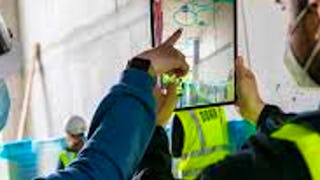In this course, you will learn about Design Coordination, Engineering Analysis, Visualization, Clash Detection, and Level of Development. "Design Authoring - Federated Model" introduces ISO 19650 concepts and the benefits of Federated Models, guiding you through creating a federated model using Autodesk Revit with practical examples. "Design Authoring - Engineering Analysis" covers Structural, Energy, and Lighting Analysis, emphasizing design assessment and optimization, along with thorough Design Review. "Visualization" explores techniques like walkthroughs, fly-throughs, and 3D sectioning, with applications in AR/VR/MR and practical BIM demos in field and virtual reality settings. "Interference / Clash Check" introduces Clash Check fundamentals, clash types, Clash Detection processes including priority management, rules, reporting, and collaborative roles. Finally, "Level Of Development (LOD)" explains LOD definitions across architectural and engineering elements, and LOD matrices for structured BIM data management and project information progression. Join us to master these essential BIM skills for effective project coordination and development.


BIM Coordination
This course is part of Building Smarter: BIM in Practice Specialization

Instructor: Subject Matter Expert
4,206 already enrolled
Included with
(34 reviews)
Recommended experience
What you'll learn
Learn about federated models, clash detection processes, and Levels of Detail (LOD) or Development (LOD) in BIM coordination
Explore various visualization types in BIM, including creating different views, walkthroughs, VR, MR, and AR demos to enhance project communication
Gain skills in performing structural, energy, and lighting analyses using BIM to optimize building performance and efficiency
Understand linking and managing Revit files, performing clash checks, generating reports, and using LOD matrices
Skills you'll gain
Details to know

Add to your LinkedIn profile
5 assignments
See how employees at top companies are mastering in-demand skills

Build your subject-matter expertise
- Learn new concepts from industry experts
- Gain a foundational understanding of a subject or tool
- Develop job-relevant skills with hands-on projects
- Earn a shareable career certificate

There are 5 modules in this course
In this module, you will explore the concept and implementation of federated modeling in BIM. Starting with an introduction to federated models and the ISO 19650 standards for shared information, you will learn strategies and benefits associated with federated models in collaborative projects. Practical skills include linking Revit files, managing linked models, exporting files in various formats, and creating renders and animations to enhance project visualization and communication.
What's included
10 videos1 assignment1 discussion prompt
In the "Design Authoring - Engineering Analysis" module, you'll learn fundamental engineering analysis techniques using BIM. Topics include structural analysis for both static and dynamic considerations, energy analysis to optimize building efficiency, lighting analysis for interior lighting improvements, and comprehensive design review processes. This module provides essential skills to enhance building performance through BIM tools.
What's included
10 videos1 assignment1 discussion prompt
The Visualization module teaches how to view and present models effectively in BIM. It covers creating different views, using visualization modes, navigating through models with walkthroughs and flythroughs, managing layers and properties, and exploring models in sections. It also includes using tablets and mobile devices for visualization, setting up BIM kiosks and rooms, and experiencing models in VR, MR, and AR through demos
What's included
12 videos1 assignment1 discussion prompt
The "Interference / Clash Check" module focuses on mastering clash detection and resolution in BIM projects. Participants will learn the fundamentals of clash checking, including types of clashes and clash avoidance strategies using federated models. The module covers detailed processes for clash detection, prioritization using matrices, defining clash detection rules, generating reports, and managing clashes effectively through grouping. Participants will also gain practical experience through comprehensive demos that illustrate real-world clash scenarios and resolution techniques using industry-standard tools and methodologies.
What's included
14 videos1 assignment1 discussion prompt
In the "LOD - Level of Development" module, you'll learn about Level of Development (LOD) in BIM. This includes understanding LOD, Level of Detail, and Level of Information. The module covers practical examples like wall foundations, precast structures, and plumbing systems to illustrate LOD applications. You'll also explore LOD charts, matrices, and the Model Progression Matrix for better project communication and standardization in BIM.
What's included
11 videos1 assignment1 discussion prompt
Earn a career certificate
Add this credential to your LinkedIn profile, resume, or CV. Share it on social media and in your performance review.
Instructor

Offered by
Explore more from Environmental Science and Sustainability

L&T EduTech

L&T EduTech
Why people choose Coursera for their career





Open new doors with Coursera Plus
Unlimited access to 10,000+ world-class courses, hands-on projects, and job-ready certificate programs - all included in your subscription
Advance your career with an online degree
Earn a degree from world-class universities - 100% online
Join over 3,400 global companies that choose Coursera for Business
Upskill your employees to excel in the digital economy
Frequently asked questions
To access the course materials, assignments and to earn a Certificate, you will need to purchase the Certificate experience when you enroll in a course. You can try a Free Trial instead, or apply for Financial Aid. The course may offer 'Full Course, No Certificate' instead. This option lets you see all course materials, submit required assessments, and get a final grade. This also means that you will not be able to purchase a Certificate experience.
When you enroll in the course, you get access to all of the courses in the Specialization, and you earn a certificate when you complete the work. Your electronic Certificate will be added to your Accomplishments page - from there, you can print your Certificate or add it to your LinkedIn profile.
Yes. In select learning programs, you can apply for financial aid or a scholarship if you can’t afford the enrollment fee. If fin aid or scholarship is available for your learning program selection, you’ll find a link to apply on the description page.
More questions
Financial aid available,

